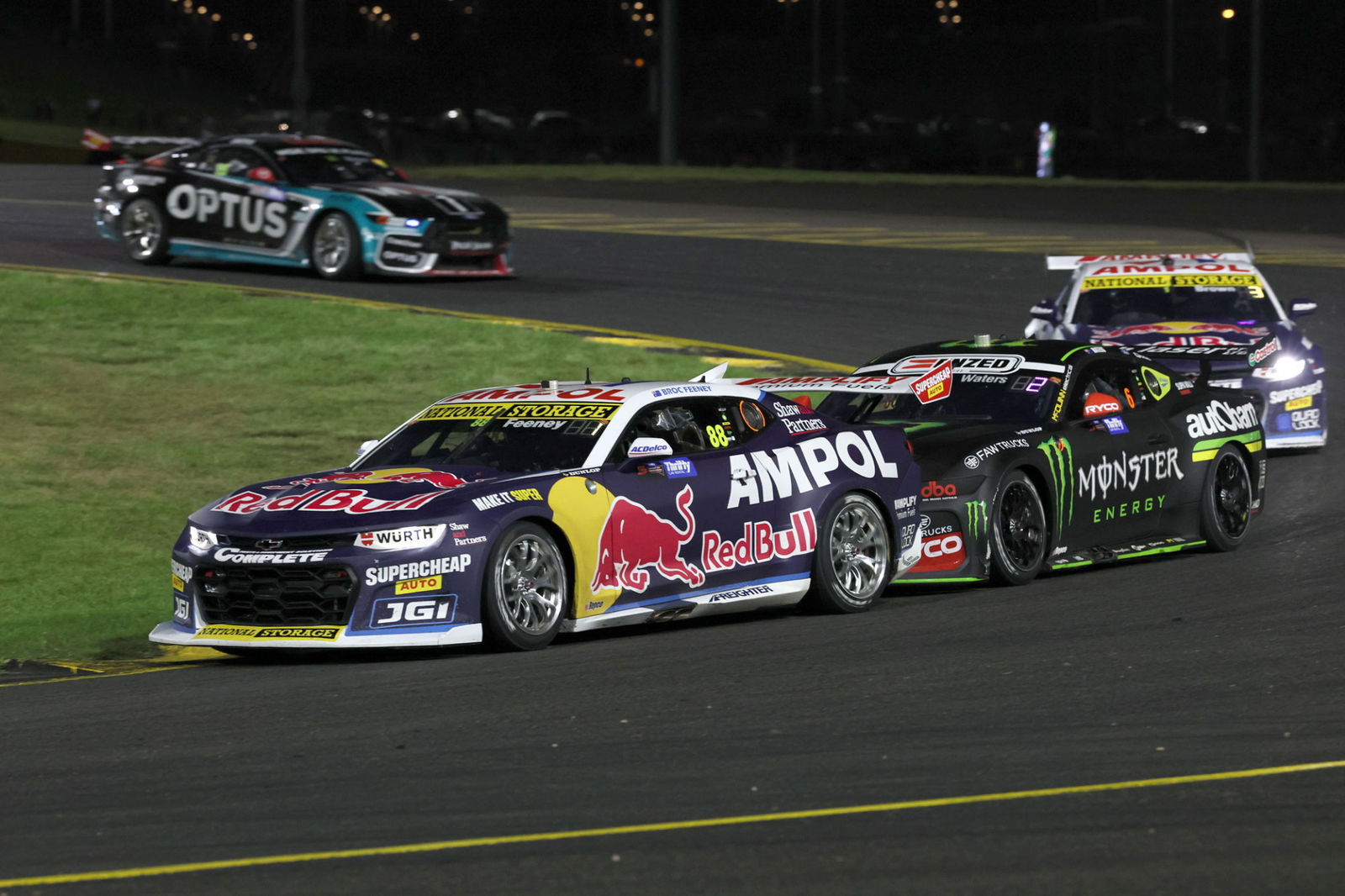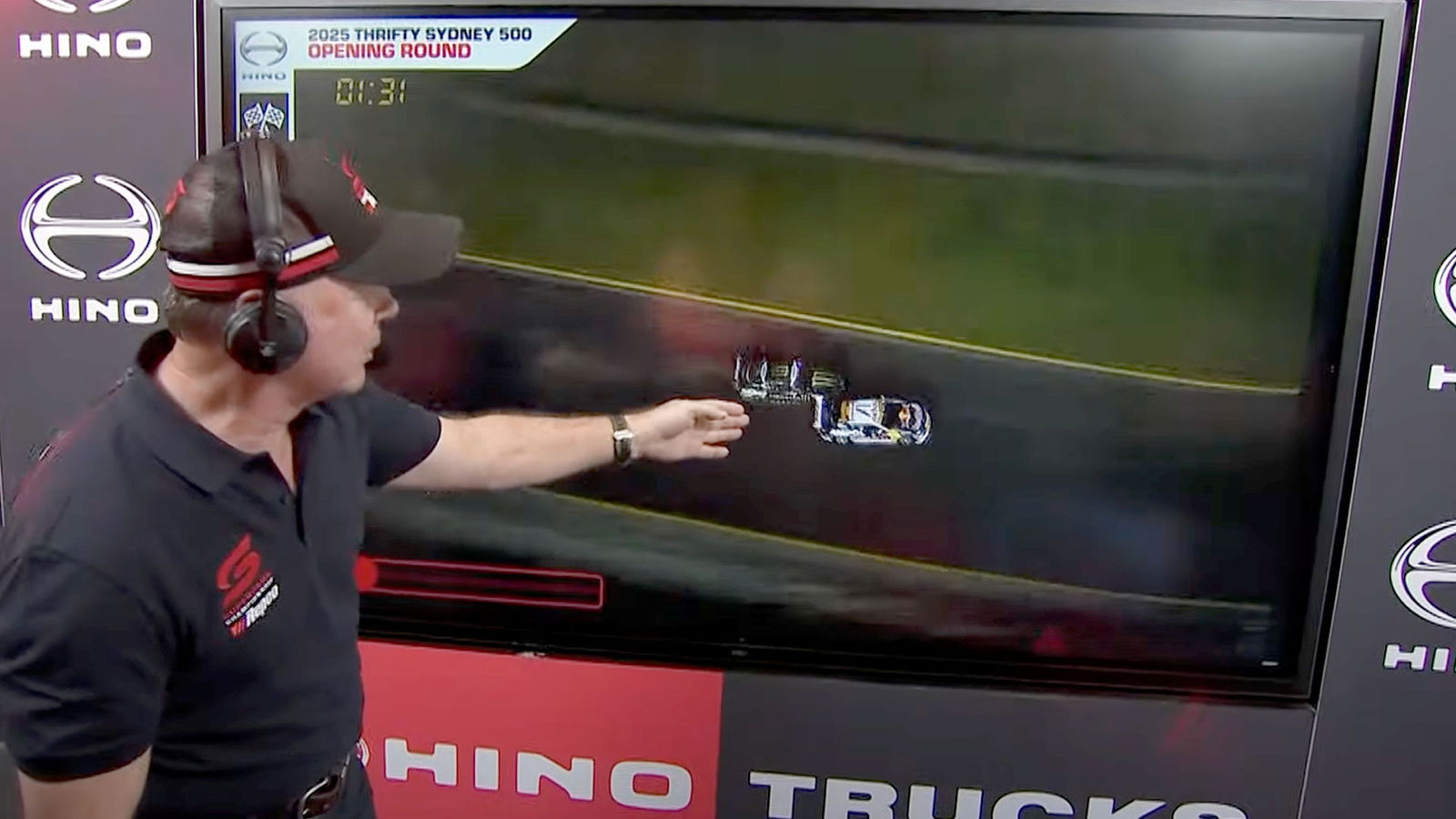

Driving standards and conduct were a major talking point following a Sydney 500 that was highlighted by a rough-and-tumble tussle for the win on Saturday night.
Officials have largely been lauded for electing not to intervene in the battle between Cam Waters and Triple Eight teammates Broc Feeney and Will Brown.
However, a range of other drivers are known to have privately expressed frustration over penalties dealt to them for separate incidents in Sydney, claiming a lack of consistency.
Baird says the category has wanted to encourage more hard racing like that witnessed during a battle between Brodie Kostecki and Shane van Gisbergen in Perth in 2023.
However, the actual racing rules have not changed, and drivers have not been given a green light to start knocking each other off the track.
“We’ve been working hard with Supercars, Motorsport Australia, the stewards, myself, and the drivers, to try and get more racing like what we had with Brodie and Shane at Perth,” Baird explained.
“What we saw at SMP… they’re great motor races. We’re letting a bit more of a ‘rubbing’s racing’ mentality play on, but there’s a line in the sand, we’ve still got a rulebook and accountability.
“NASCAR has no accountability and no rulebook by the look of it. It’s not NASCAR-style racing.
“I’m annoyed as a spectator watching NASCAR because I’m sitting there for 499 miles only for a bloke who was never in it to win it because you’re allowed to shovel everyone out of the road.”
Frustrated by complaints over penalties for blatant front-to-rear contact across the weekend, Baird says the guidelines are clear.
“The best way to explain it is, ‘that’s a front bumper and that’s a rear bumper, they shouldn’t be getting connected’,” he said.
“A door and a rear quarter, you can kind of do that… but you can’t just usher people off the road.
“Play the game hard but fair. That’s the racing we want,” he added.
“We love going to AFL and NRL games when it’s hard but fair. You don’t want to see people hurt, but you also don’t want the ref too involved.”
There was also some consternation over Waters being allowed to redress a punt on Feeney with four laps remaining despite Brown having snuck in between the pair during the initial incident.
Supercars removed redress wording from its rulebook following a famous three-car crash during the closing stages of the 2016 Bathurst 1000.
However, Baird notes it has always remained an option for drivers to voluntarily redress in the hope of avoiding a penalty, as Waters managed to do.
“The redress policy has always been there and one that Cam Waters has never chosen to use before, but he did on the weekend to very good effect,” explained Baird.
“It would have been different if the order hadn’t been corrected, but it was corrected back to the same order as prior to the incident.
“We’re probably being a little bit more lenient on the redress, because we want play-on style racing, but it’s always been there.”
‘The fans won’: Supercars stars happy with NASCAR-style racing
Baird is clear that Waters would have been penalised for spinning Feeney at Turn 4 if not for the redress.
Waters went on to snatch the win from Feeney in the dying metres of the race after a final corner in which he’d bumped into the Red Bull Camaro.
Vision and telemetry data available to officials showed Waters’ run on Feeney down the straight was the result of a side-draft, and not momentum gained from the bump.
Baird points out that Waters’ move was legal regardless due to the nature of the contact between the two cars.

“Broc realises he’s left a gap, there is overlap and he keeps moving across the front of Waters,” Baird explained of the final corner incident, brilliantly detailed by Mark Larkham in the video below.
“People say to me ‘Cam could have pulled out’, but he doesn’t have to. There’s a straight bit of road between 10 and 11, so once he gets in there he’s entitled to be in there.
“No one is wholly or predominately to blame for the bump. Cam is in there, Feeney has turned in. This is the key. It’s not in the rear bar.”
The battle between the trio had been set up by another controversial moment when Waters lost time exiting his pit box at the first round of stops due to the Red Bull duo directly ahead.
While Brown was effectively double-stacked behind Feeney during the rush of Safety Car-induced pit stops, Baird notes a vital point in the case.
“At no stage did they have two cars parked,” he said of Triple Eight.
“If Cam had gone it would have been an unsafe release [against Tickford] because the other car was still rolling into the box.
“If [Brown] was stationary, that would be a penalty. But it was fluid motion, one dropped and started leaving, the other came rolling in.”




















Discussion about this post